Three years ago I grafted cork bark black pine scions onto several young, non-corking, black pines. Once the grafts took hold, I gradually reduced the foliage of the understock. Now that the desired foliage is strong, it’s time to remove the original foliage.
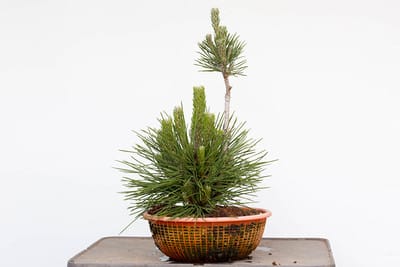
6 year-old cork bark black pine – the tallest branch is the last of the original foliage
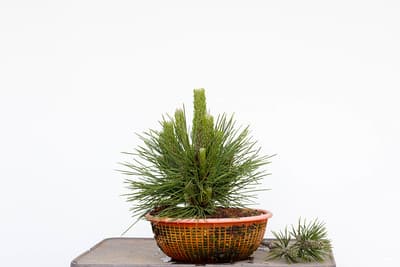
After removing the last of the original foliage
That’s all there is to it at this point. After making the cut, I sealed the wound with cut paste.
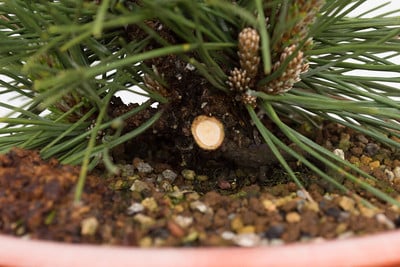
Wound where the original trunk was cut
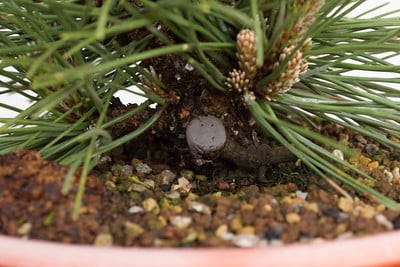
After sealing the wound with cut paste
The other two trees from this batch received the same treatment.
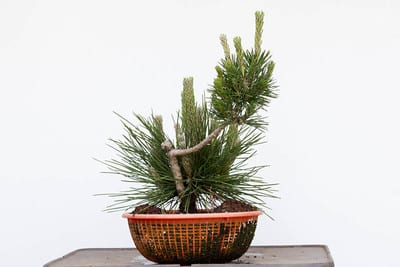
6 year-old black pine
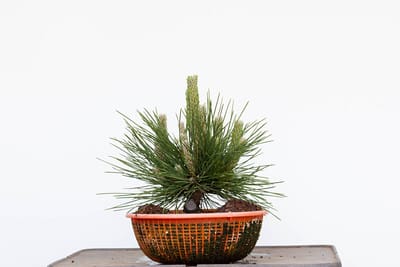
After removing the original foliage
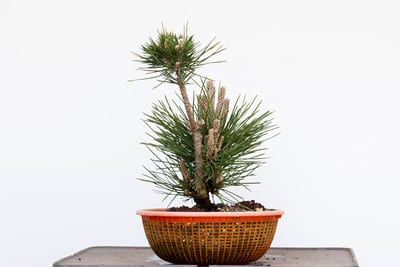
Cork bark black pine
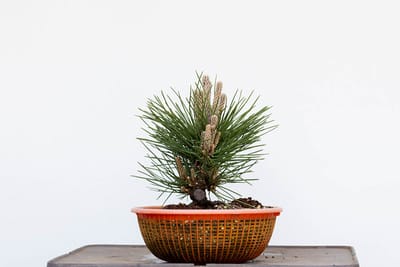
After making the cut
Although getting to this point from seed required six years, in many ways this was the easiest part of the process. Cork barks can’t be bent like regular black pines which means I have one chance to get the wiring and branch selection right. At some point within the next year, I’ll thin these trees, select leaders, and wire the branches. In the meantime, I’ll make sure they get plenty of sunlight, water and fertilizer.
For more on the story up to this point, see:
- Encouraging grafted foliage
- Cork bark black pine from graft follow-up
- Repotting young cork bark black pines
Subscribe to Bonsai Tonight
New Posts Delivered Every Tuesday and Friday
Gary R Croft says
Jonas,glad u mentioned cork barks cant be bent like black pines. Got it filed away in my brain now-never saw this written up. Maybe I was inattentive!
Scott says
Good stuff Jonas. Looking forward to how well the the graft union looks in the coming years. Do you ever plan to create a low air layer to force cork roots?
Jonas Dupuich says
Hi Scott – good question. Typically the goal is to graft as close to the roots as possible. If the root base is good, corking roots aren’t necessary.
Brian mcgrath says
Hi Michael
What did you use as your root stock. I have access to contorta or shore pine. Could I use that for understock.
I tried it with jbp, and was successful for 2 years, and then for some reason, tragedy . I will try again this late fall as it seems to work up here.
Thank you
Brian
Brian mcgrath says
Sorry Jonas
Brian
Jonas Dupuich says
Hi Brian – thanks for the question. I updated the post to reflect that the cork bark foliage was grafted onto a black pine seedling.